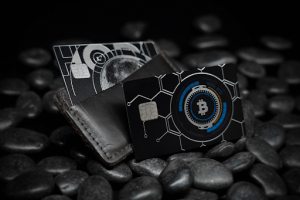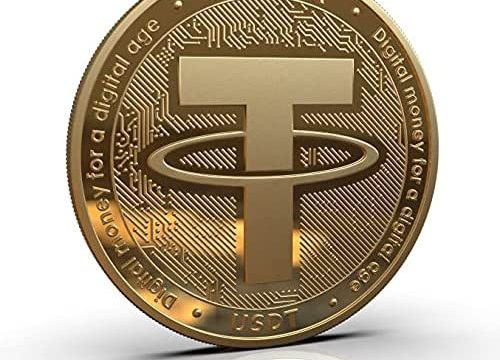When you’re on the crypto train, you hear a lot about crypto debit cards. But is it still worth it? This article will cover the pros and cons of using such cards.

A cryptocurrency debit card is a payment method that allows you to spend your cryptocurrency holdings in the same way you would spend cash at a store. By loading up your crypto onto the debit card and then using it like a regular credit or debit card, you can buy goods or services just as if they were priced in dollars.
Most merchants do not accept crypto. Also, it’s often not practical to carry around large amounts of cash these days (especially if it’s digital currency), so having an alternative way to access your money can be helpful. Plus, there are other benefits: crypto cards have lower fees than traditional bank accounts and provide more privacy because they don’t require personal information like name or address (although some may request ID).
What is a cryptocurrency debit card?
A cryptocurrency debit card is a plastic or virtual card that allows you to spend your cryptocurrency. Some of the debit cards on offer are precious metals. You can use the card to pay for goods and services at any merchant that accepts Visa or MasterCard.
Cryptocurrency debit cards are similar to regular debit cards, but they’re backed by cryptocurrencies instead of government-issued fiat currencies like Euros or USD. For example, a Bitcoin Debit Card lets you buy things online with bitcoins without converting them into another currency first.
To use your crypto debit card, simply insert it into an ATM machine (or swipe it at checkout if used in person). Then enter a PIN code for authentication purposes, just like with a normal bank account; after that process finishes up, you’ll be able to spend real money on whatever item you choose!
Of course, behind the scenes, the process is a little more complex.
Why are crypto debit cards popular?
If you’re reading this, it’s likely that you’re already aware of the advantages of a crypto debit card. They offer a way to use your cryptocurrencies in everyday life by using them as normal cash at any place that accepts credit cards. But what are the pros and cons?
Why are crypto debit cards so popular?
In short, they allow users to easily convert their cryptocurrency into fiat currency when needed and avoid having to sell their digital assets on an exchange. Unlike traditional bank accounts with which we’re all familiar, these services remove the need for lengthy sign-up processes or strict verification requirements; instead, all you need is some form of ID (driver’s license or passport), some funds in your wallet and access to an internet connection (for example Bitcoin ATM machines).
It also allows people who don’t have access or trust issues with banks/financial institutions access a convenient way of making payments without compromising privacy because there’s no personal information required except maybe contact details such as email address, etcetera…
What are the benefits of crypto debit cards?
A crypto debit card is a great way to use your cryptocurrency. You can buy things with it, pay bills, make purchases online and even withdraw cash from ATMs.
Here are some of the benefits of using a crypto debit card:
What are the risks and drawbacks of crypto debit cards?
A crypto debit card is a great tool for making cryptocurrency purchases and dealing with fiat currency. However, there are still some risks and drawbacks to consider before you pull the trigger on one of these cards.
- Fees: While most crypto debit cards don’t have annual or monthly fees, they charge transaction fees whenever you make a purchase or ATM withdrawal. Depending on your card and provider, these can vary from $1 to $5 per transaction (or even higher). If you plan to use your crypto debit card regularly and make many transactions throughout the year, this could add up quickly!
- Exchange rates: The exchange rate between cryptocurrencies like Bitcoin and fiat currencies like U.S. dollars constantly fluctuates—and sometimes wildly—depending on market conditions at any given moment in time. Because of this volatility, it’s difficult for traditional banks issuing cryptocurrency-friendly credit cards to accurately predict the “exchange” rate when they send funds from their customer’s accounts into their own savings accounts (usually held in USD). This means that if you decide not to use all of your monthly spending limits right away but instead save some cash for later purchases with your card (and then try using those saved funds at some point down the line), chances are good that whatever amount remains won’t be worth nearly as much by then due to market fluctuations since last time it was used!
How to choose a cryptocurrency debit card.
When choosing a cryptocurrency debit card, you’ll want to ensure it supports the coins you want to use and offers good exchange rates, low fees, and good customer service. A feature that is often overlooked but extremely important is security. Just like with your regular bank account, if your crypto card gets compromised and someone steals your funds, there isn’t much you can do about it unless you find out quickly enough before they’ve had time to spend your money.
The best way to protect yourself from losing funds on a crypto debit card is by ensuring that it has strong security features such as two-factor authentication (2FA) or biometrics (e.g., fingerprint scanners).
Learn about the differences between crypto debit cards.
There are many different types of crypto debit cards, and it’s important to understand their differences. The best one for your needs might not be the most expensive or high-profile; it could be a lower-cost card with a lower monthly fee that offers better rates on bitcoin purchases. It may even be a prepaid card that doesn’t require you to pay for any physical product; just sign up for their service and use it online!
The first thing you’ll want to do is find out if your bank supports cryptocurrency at all, so if you don’t already have one, then start by researching what banks support cryptocurrency purchases and deposits in your area. Suppose only some banks around town accept crypto deposits (and maybe even some ATM withdrawals). In that case, this can narrow down what type of crypto debit card would best suit your needs: a prepaid card that doesn’t require any physical purchase like gift cards or actual money orders. Or perhaps there are more than enough options within driving distance where customers can buy things like groceries or gas stations instead? See our previous article here about how these cards work before deciding which ones might work best for them based on personal preference factors such as convenience.”
So, there you have it: a quick overview of crypto debit cards and why they’re so popular.











